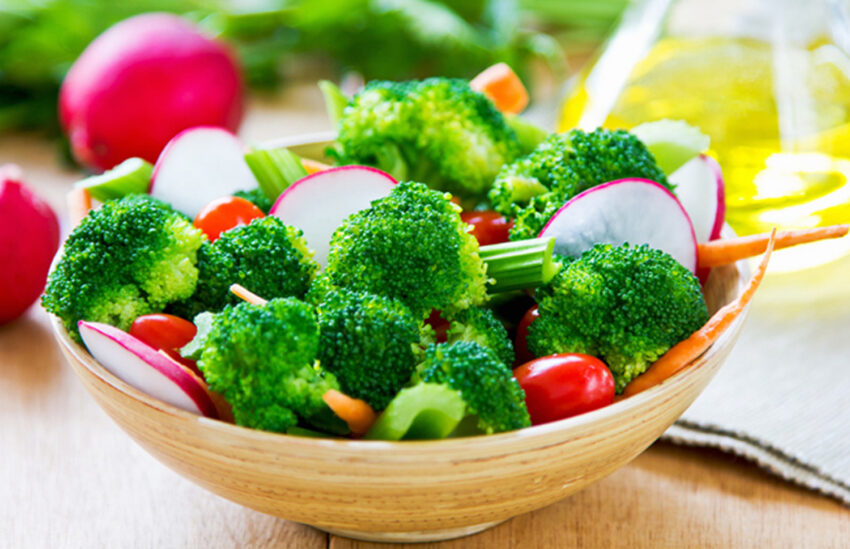Introduction
Many people who try to lose weight often find themselves struggling with feelings of hunger as they restrict calories. However, choosing the right low-calorie foods can help you feel satisfied while still cutting calories. This article provides an overview of nutrient-dense, low-calorie foods that are perfect for weight loss.
Fruits and Vegetables
Fruits and vegetables should form the backbone of any Low-Calorie Diet. They are packed with fiber, water and essential vitamins/minerals but relatively low in calories. Aim to fill half your plate with fruits and veggies at every meal for optimal satisfaction.
Some top low-calorie produce picks include:
– Apples (95 calories) – Apples are crunchy and filling, with only 95 calories per medium fruit.
– Berries (40-80 calories per 1/2 cup) – Strawberries, blueberries and blackberries are sweet treats that won’t spike your calorie count.
– Broccoli (34 calories per 1 cup) – Broccoli is an excellent source of Vitamin K, Vitamin C and fiber per few calories.
– Celery (6 calories per stalk) – Crunchy and hydrating celery makes a great snack.
– Carrots (25 calories per 1 medium carrot) – High in beta-carotene and fiber to keep you satisfied.
High-Protein Foods
Opting for lean protein at meals and snacks can boost fullness. Protein takes longer to digest, leaving you feeling fuller for longer versus higher-carb or higher-fat options. Great low-calorie protein picks include:
– Beans/Legumes (115-250 calories per 1/2 cup cooked) – Kidney beans, chickpeas and lentils are nutritional powerhouses.
– Egg whites (17 calories per egg white) – Scramble just the egg whites for protein without the yolk calories.
– Skinless chicken/turkey (110-160 calories per 4 oz cooked) – Versatile, protein-packed poultry.
– Fat-free plain Greek yogurt (80-110 calories per 1/2 cup) – Creamy texture and protein make this a filling snack.
Whole Grains
Incorporating intact whole grains provides satiating fiber, B vitamins, minerals and a balanced energy source. Look for 100% whole grain when possible:
– Oatmeal (150-200 calories per 1/2 cup dry) – High in soluble fiber and slow-burning carbs. Flavor with fruit.
– 100% whole wheat bread (80-120 calories per slice) – Look for thick slices to feel more filling.
– Brown rice (216 calories per 1 cup cooked) – Takes longer to digest than white, more filling.
– Quinoa (222 calories per 1 cup cooked) – Complete plant protein and only 5g net carbs per cup.
Healthy Fats
All calories are not created equal – it’s important to choose “good” fats that enhance satiety. Some healthy fat options include:
– Avocado (322 calories per whole avocado) – Monounsaturated fat helps absorb nutrients, reduces inflammation.
– Nuts (168 calories per 1 oz) – Almonds, walnuts and pistachios add crunch and satiation between fiber and healthy fats.
– Olive oil (119 calories per tbsp) – Drizzle on salads or veggies for flavor and healthy unsaturated fat.
– Salmon (110 calories per 4 oz cooked) – omega-3 fatty acids fight inflammation and belly fat.
Beverages
Liquid calories can rapidly add up, so choose water-rich drinks to feel full and hydrated. Some smart hydrating choices are:
– Water – Zero calories, extremely hydrating and free.
– Unsweetened coffee/tea – Less than 5 calories per mug.
– Flavored seltzers – 10 calories or less per can.
– Vegetable juice (50-70 calories per cup) – Opt for low-sodium veggie juice over sugary soda.
Portion Control
While making wise whole food selections forms the foundation of weight loss success, controlling portions is equally key. Measure out servings until you get the hang of proper sizes. A few best practices include:
– Fill half your plate with non-starchy veggies at meals for volume and low calories.
– Limit refined carbs, added fats and sugars that add calories but little nutrition.
– When eating out, opt to take half the provided entree home or share an entree between two people.
– Control packaged serving sizes (nuts, trail mix) by weighing single servings on a food scale.
By choosing low-calorie foods focused on lean proteins, whole grains, fruits and vegetables you can easily create balanced, nutrient-dense 500-1000 calorie meal plans for steady weight loss without hunger or deprivation. Stay tuned for more tips on meal prep, exercise and mindful eating habits to maintain results long-term.

